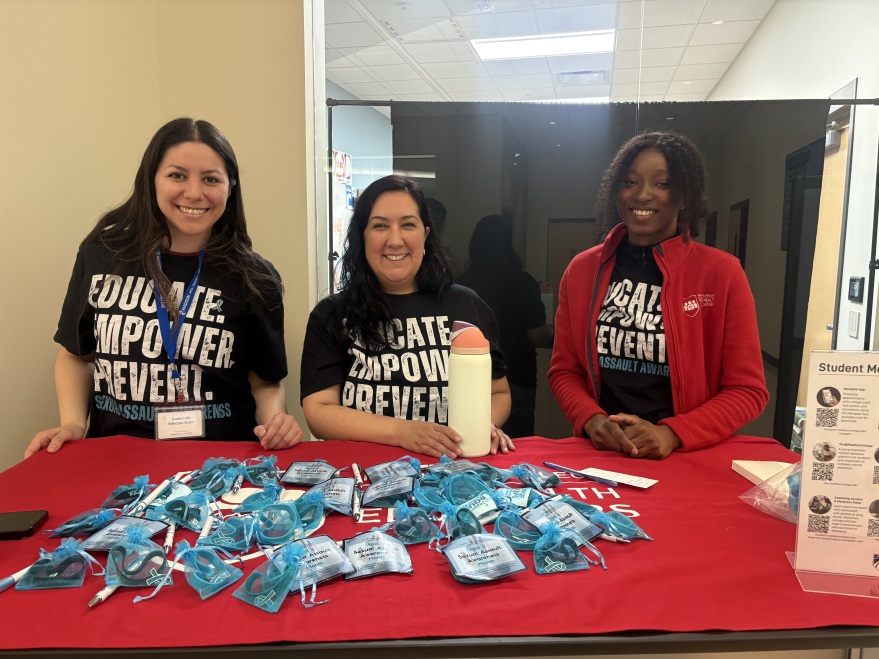An all-too silent struggle
September 27, 2017
As a woman who has spent the last 16 years combatting clinical depression and chronic anxiety, Sept. 10 through Sept. 16 — National Suicide Prevention Week — is an opportunity for reflection and evaluation.
As anyone who has suffered from mental health issues, diagnosed or otherwise, can tell you, it is an ordeal often mired in shame and secrecy. Great effort is expended to hide the existence of our burdens, for fear of social stigmatization and all its ramifications. The juxtaposition between our silent struggle and a nationally-proclaimed week addressing suicide, one of the most severe consequence of mental health illness, strikes a dissonant chord with me. The reality of my day-to-day experiences seems untouched by this blocked-off bar on the calendar. Yet this week is ultimately supposed to be for us, the individuals who live with mental illness. So, what isn’t adding up?
Let me first say that I have the utmost respect for what the National Suicide Prevention Week is attempting to do. For individuals whose lives have been touched by suicide, the week can provide a measure of solace — a standing promise that their pain and losses will never be forgotten. For this I have the utmost gratitude, and will forever be supportive of National Suicide Prevention Week and all it represents.
Yet the fact remains that National Suicide Prevention Week is still only exactly what the name suggests: a week. In a perfect world, the week would be a small facet of a 24/7/365 infrastructure in place for supporting people with mental health issues. In reality, National Suicide Prevention Week stands in near-isolation, an oasis of support and recognition in an otherwise-hostile environment for individuals with mental illness. It is a commendable first step, but it still isn’t enough, especially in light of the stark reality of suicide and mental health conditions in the U.S.
Over 26 percent of American adults suffer from mental health issues (the predominant cause of all suicides across the board) according to online news source Tech Times. Consider the following: you go to a family reunion or a holiday celebration with 20 people. Statistically speaking, at least five people in the room are living with a mental illness; two or more of these people have more than one disorder. When you’re sitting in your class of 13 people, look around. In all likelihood, three to four of your classmates are affected. This segment of the population, while a minority, does not exist in a vacuum from everyone else’s day-to-day lives and realities. We are fully integrated, and often invisible, within the greater context of society.
Yet as widespread as our struggle is, under-treatment and habitual stigmatization are still even more present in our culture. Individuals with mental health issues often cite fear of stigmatization as the number one reason preventing them from seeking treatment and support. Stigmatization, or in other words, being ostracized and mistreated because of other peoples’ negative misperceptions about mental health, is often as harmful as the actual disorders themselves. Stigmas arise from a combination of harmful media portrayals and the societal sense of taboo surrounding conversations about mental health. This unspoken avoidance prevents open discussion in which the media-based misconceptions would otherwise be addressed.
This reciprocity, coupled with a widespread lack of affordable therapy and medications, forms a vicious cycle of harm and marginalization for individuals with mental illness. In short, maintaining the status quo, and staying silent about mental health issues for 51 out of 52 weeks in the year, is the best possible way to ensure that suicide remains one of the top ten causes of death in our country.
Yet while the situation is critical, it isn’t irreparable. In addition to the long-term, systemic changes that need to be made concerning how our education systems address mental illness, there are a number of smaller-scale changes that we as people can make on a personal level. The most essential change that all of us can make is to begin confronting our own engrained stigmas. Ask yourself: “Have I ever jumped to the conclusion that a person with mental illness is physically dangerous, to myself or those around me?” “Have I ever viewed someone with mental illness as a one-dimension caricature, whose sole identifying feature is their disorder?” “Have I ever reacted to someone’s admission of mental illness with distaste, aversion, or embarrassment?”
If the answer to any of these questions is yes, odds are your reactions stem from stigmas and stereotypes so deeply embedded that they’ve become subconscious. If that is the case, when these reactions do arise, pause. Ask yourself why you feel this way. Ask yourself if this reaction has any logical grounding in the situation at hand. Odds are, it doesn’t. Recognize this reaction as something that, while perhaps unintentional, is actively harmful to the people around you.
Once you have acknowledged this stigma, you have the power to choose to disarm it. It takes time, and repeated evaluation.
It’s uncomfortable to confront the negative aspects of yourself. Yet every time you’re tempted to stop, just remember that when you choose empathy as a response to mental illness, you might just be helping to save a life.































